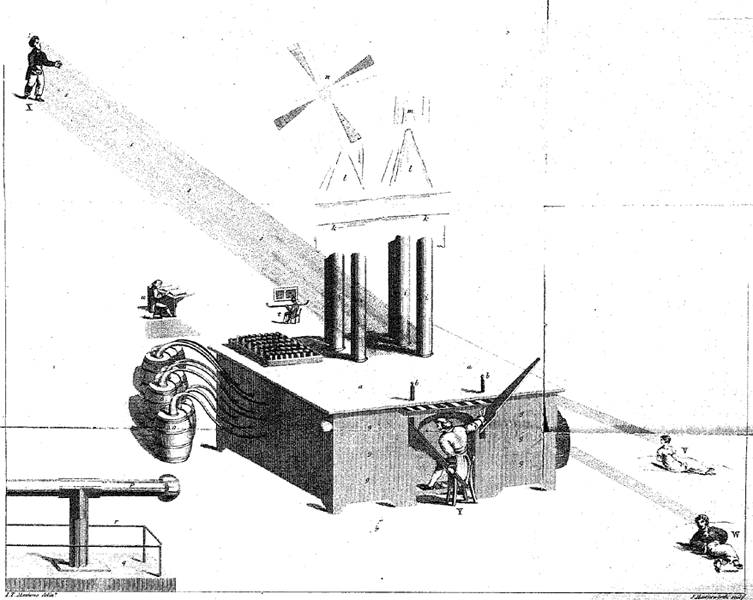|
Scale For The Assessment Of Positive Symptoms
Within psychological testing, the Scale for the Assessment of Positive Symptoms (SAPS) is a rating scale to measure positive symptoms in schizophrenia. The scale was developed by Nancy Andreasen and was first published in 1984.Andreasen, Nancy C. (1984)"Scale for the assessment of positive symptoms" SAPS is split into 4 domains, and within each domain separate symptoms are rated from 0 (absent) to 5 (severe). The scale is closely linked to the Scale for the Assessment of Negative Symptoms (SANS) which was published a few years earlier. Items Hallucinations *Auditory Hallucinations *Voices Commenting *Voices Conversing *Somatic or Tactile Hallucinations *Olfactory Hallucinations *Visual Hallucinations *Global Rating of Severity of Hallucinations Delusions *Persecutory Delusions *Delusions of Jealousy *Delusions of Sin or Guilt *Grandiose Delusions *Religious Delusions *Somatic Delusions *Ideas and Delusions of Reference *Delusions of Being Controlled *Delusions of Mind Reading * ... [...More Info...] [...Related Items...] OR: [Wikipedia] [Google] [Baidu] |
Psychological Testing
Psychological testing is the administration of psychological tests. Psychological tests are administered by trained evaluators. A person's responses are evaluated according to carefully prescribed guidelines. Scores are thought to reflect individual or group differences in the construct the test purports to measure. The science behind psychological testing is psychometrics. Psychological tests According to Anastasi and Urbina, psychological tests involve observations made on a "carefully chosen ''sample'' mphasis authorsof an individual's behavior." A psychological test is often designed to measure unobserved constructs, also known as latent variables. Psychological tests can include a series of tasks or problems that the respondent has to solve. Psychological tests can include questionnaires and interviews, which are also designed to measure unobserved constructs. Questionnaire- and interview-based scales typically differ from psychoeducational tests, which ask for a responden ... [...More Info...] [...Related Items...] OR: [Wikipedia] [Google] [Baidu] |
Schizophrenia
Schizophrenia is a mental disorder characterized by continuous or relapsing episodes of psychosis. Major symptoms include hallucinations (typically hearing voices), delusions, and disorganized thinking. Other symptoms include social withdrawal, decreased emotional expression, and apathy. Symptoms typically develop gradually, begin during young adulthood, and in many cases never become resolved. There is no objective diagnostic test; diagnosis is based on observed behavior, a history that includes the person's reported experiences, and reports of others familiar with the person. To be diagnosed with schizophrenia, symptoms and functional impairment need to be present for six months (DSM-5) or one month (ICD-11). Many people with schizophrenia have other mental disorders, especially substance use disorders, depressive disorders, anxiety disorders, and obsessive–compulsive disorder. About 0.3% to 0.7% of people are diagnosed with schizophrenia during their lifetime. In 2 ... [...More Info...] [...Related Items...] OR: [Wikipedia] [Google] [Baidu] |
Schizophrenia
Schizophrenia is a mental disorder characterized by continuous or relapsing episodes of psychosis. Major symptoms include hallucinations (typically hearing voices), delusions, and disorganized thinking. Other symptoms include social withdrawal, decreased emotional expression, and apathy. Symptoms typically develop gradually, begin during young adulthood, and in many cases never become resolved. There is no objective diagnostic test; diagnosis is based on observed behavior, a history that includes the person's reported experiences, and reports of others familiar with the person. To be diagnosed with schizophrenia, symptoms and functional impairment need to be present for six months (DSM-5) or one month (ICD-11). Many people with schizophrenia have other mental disorders, especially substance use disorders, depressive disorders, anxiety disorders, and obsessive–compulsive disorder. About 0.3% to 0.7% of people are diagnosed with schizophrenia during their lifetime. In 2 ... [...More Info...] [...Related Items...] OR: [Wikipedia] [Google] [Baidu] |
Nancy Andreasen
Nancy Coover Andreasen (born November 11, 1938) is an American neuroscientist and neuropsychiatrist. She currently holds the Andrew H. Woods Chair of Psychiatry at the Roy J. and Lucille A. Carver College of Medicine at the University of Iowa. Early life Andreasen was born in Lincoln, Nebraska. She received her undergraduate degree from the University of Nebraska with majors in English, History, and Philosophy. She received a Ph.D. in English literature. She was a Professor of Renaissance Literature in the Department of English at the University of Iowa for 5 years. She published scholarly articles on John Donne and her first book in the field of Renaissance English literature: John Donne: Conservative Revolutionary.Who's Who in the World. Nancy Coover Andreasen. 25th ed. New Providence: Marquis Who's Who, 2008 Clinical A serious illness after the birth of her first daughter piqued Andreasen's interest in medicine and biomedical research, and she decided to change careers to ... [...More Info...] [...Related Items...] OR: [Wikipedia] [Google] [Baidu] |
Scale For The Assessment Of Negative Symptoms
The Scale for the Assessment of Negative Symptoms (SANS) is a rating scale that mental health professionals use to measure negative symptoms in schizophrenia. Negative symptoms are those conspicuous by their absence—lack of concern for one's appearance, and lack of language and communication skills, for example. Nancy Andreasen developed the scale and first published it in 1984. SANS splits assessment into five domains. Within each domain it rates separate symptoms from 0 (absent) to 5 (severe). The scale is closely linked to the Scale for the Assessment of Positive Symptoms (SAPS), which was published a few years later. These tools are available for clinicians and for research. Background Schizophrenia is a severe mental illness characterized by a range of behaviors, including hallucinations and delusions. Hallucinations refer to disorders involving the sensory systems, and are most often manifested as seeing or hearing things (e.g., voices) that do not exist. Delusions include ... [...More Info...] [...Related Items...] OR: [Wikipedia] [Google] [Baidu] |
Hallucination
A hallucination is a perception in the absence of an external stimulus that has the qualities of a real perception. Hallucinations are vivid, substantial, and are perceived to be located in external objective space. Hallucination is a combination of 2 conscious states of brain wakefulness and REM sleep. They are distinguishable from several related phenomena, such as dreaming ( REM sleep), which does not involve wakefulness; pseudohallucination, which does not mimic real perception, and is accurately perceived as unreal; illusion, which involves distorted or misinterpreted real perception; and mental imagery, which does not mimic real perception, and is under voluntary control. Hallucinations also differ from "delusional perceptions", in which a correctly sensed and interpreted stimulus (i.e., a real perception) is given some additional significance. Many hallucinations happen also during sleep paralyses. Hallucinations can occur in any sensory modality—visual, auditory, olfa ... [...More Info...] [...Related Items...] OR: [Wikipedia] [Google] [Baidu] |
Delusion
A delusion is a false fixed belief that is not amenable to change in light of conflicting evidence. As a pathology, it is distinct from a belief based on false or incomplete information, confabulation, dogma, illusion, hallucination, or some other misleading effects of perception, as individuals with those beliefs ''are'' able to change or readjust their beliefs upon reviewing the evidence. However: "The distinction between a delusion and a strongly held idea is sometimes difficult to make and depends in part on the degree of conviction with which the belief is held despite clear or reasonable contradictory evidence regarding its veracity." Delusions have been found to occur in the context of many pathological states (both general physical and mental) and are of particular diagnostic importance in psychosis, psychotic disorders including schizophrenia, paraphrenia, Mania, manic episodes of bipolar disorder, and psychotic depression. Types Delusions are categorized into four d ... [...More Info...] [...Related Items...] OR: [Wikipedia] [Google] [Baidu] |
Tangentiality
Tangential speech or tangentiality is a communication disorder in which the train of thought of the speaker wanders and shows a lack of focus, never returning to the initial topic of the conversation.''Forensic Aspects of Communication Sciences and Disorders'' by Dennis C. Tanner 2003 page 289 It tends to occur in situations where a person is experiencing high anxiety, as a manifestation of the psychosis known as ''schizophrenia'', in dementia or in states of delirium. It is less severe than logorrhea and may be associated with the middle stage in dementia. It is, however, more severe than circumstantial speech in which the speaker wanders, but eventually returns to the topic. Some adults with right hemisphere brain damage may exhibit behavior that includes tangential speech. Those who exhibit these behaviors may also have related symptoms such as seemingly inappropriate or self-centered social responses, and a deterioration in pragmatic abilities (including appropriate eye conta ... [...More Info...] [...Related Items...] OR: [Wikipedia] [Google] [Baidu] |
Circumstantiality
Circumstantial speech, also referred to as circumstantiality, is the result of a so-called "non-linear thought pattern" and occurs when the focus of a conversation drifts, but often comes back to the point.''Problem-Based Psychiatry'' by Ben Green 2009 page 15 In circumstantiality, apparently unnecessary details and seemingly irrelevant remarks cause a delay in getting to the point. If someone exhibits circumstantial speech during a conversation, they will often seem to "talk the long way around" to their point, which may be an attempt by the speaker to include pertinent details, that may contrast with the speech which is more direct, succinct, and to the point (the gist) even at the expense of more precise, accurate communication. Circumstantial speech is more direct than tangential speech in which the speaker wanders and drifts and usually never returns to the original topic, and is far less severe than logorrhea. Signs and symptoms A person with circumstantiality has slowed thi ... [...More Info...] [...Related Items...] OR: [Wikipedia] [Google] [Baidu] |
Pressure Of Speech
Pressure of speech or pressured speech is a tendency to speak rapidly and frenziedly. Pressured speech is motivated by an urgency that may not be apparent to the listener. The speech produced is difficult to interpret. Such speech may be too fast, erratic, irrelevant, or too tangential for the listener to understand. It is an example of cluttered speech, and is often associated with certain mental disorders, particularly mania and schizophrenia. It can be unrelenting, loud, and without pauses. Description Pressured speech is unrelenting, rapid, often loud talking without pauses. Those with pressured speech do not respond to verbal and nonverbal cues indicating that others wish to speak, turning from one listener to another or speaking even when no listeners remain. They are unable to listen to others, either talking nonstop until they run out of steam, or just standing there and looking at the other speaker before moving away. The speech can be either intelligible or unintelligi ... [...More Info...] [...Related Items...] OR: [Wikipedia] [Google] [Baidu] |
Clanging
In psychology and psychiatry, clanging or clang association refers to a mode of speech characterized by association of words based upon sound rather than concepts. For example, this may include compulsive rhyming or alliteration without apparent logical connection between words. This is associated with the irregular thinking apparent in psychotic mental illnesses (e.g. mania and schizophrenia). Gustav Aschaffenburg found that manic individuals generated these "clang-associations" roughly 10–50 times more than non-manic individuals. Aschaffenburg also found that the frequency of these associations increased for all individuals as they became more fatigued. Clanging refers specifically to behavior that is situationally inappropriate. While a poet rhyming is not evidence of mental illness, disorganized speech that impedes the patient's ability to communicate is a disorder in itself, often seen in schizophrenia. See also *Thought disorder A thought disorder (TD) is any disturbanc ... [...More Info...] [...Related Items...] OR: [Wikipedia] [Google] [Baidu] |



